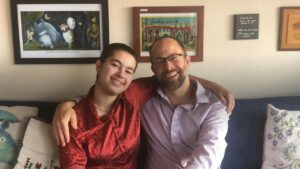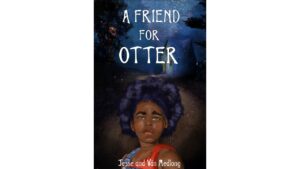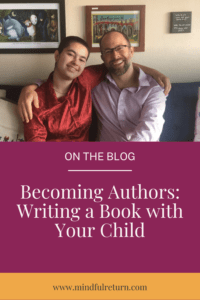 Many of us dream of becoming authors. If you’ve had “writing a book” on your bucket list, you’re in good company. Some of us eek one out on a topic we feel passionate about. (For me, it was Back to Work After Baby; for my husband, Relationships to Infinity.) Some of us publish prolifically. (See, for example, the many awesome time management books by Laura Vanderkam, including Tranquility by Tuesday, which she’ll be talking with me about during our Mindful Return May Book Talk.)
Many of us dream of becoming authors. If you’ve had “writing a book” on your bucket list, you’re in good company. Some of us eek one out on a topic we feel passionate about. (For me, it was Back to Work After Baby; for my husband, Relationships to Infinity.) Some of us publish prolifically. (See, for example, the many awesome time management books by Laura Vanderkam, including Tranquility by Tuesday, which she’ll be talking with me about during our Mindful Return May Book Talk.)
If book-writing has been on your list – or on the list of your child! – I’m here to share some inspiration with you. I recently learned the beautiful story of a BigLaw attorney who co-authored and published a novel with his child, and I had to share it with you.
Today’s guest post is by Jesse Medlong. He and his child, Ván, became published authors a few months ago when A Friend for Otter, their 236-page young adult (YA) novel came out. For me, his story serves as a brilliant reminder that our work lives need not be excuses for pursuing important dreams. And that baby steps over long periods of time (in his case, 7 years) can take us anywhere we want to go.
Here’s Jesse, to share with us his story and offer us some advice on co-authoring a book with our kids, should we want to pursue a similar path.
************************************
Just in time for the holidays last year, A Friend for Otter hit the shelves. This dystopic YA fantasy novel was the publishing debut of an unlikely duo of co-authors. Spoiler alert: my oldest child (Ván) and I are that duo.
 A Friend for Otter is (if I do say so myself) a decent story. But what makes it so special to me is a story of its own. One about a big-law sustainability lawyer and an 11-year-old kid writing and publishing a novel together over seven long years as an experiment in home schooling and wish fulfillment. And it all began one day when Ván declared from the backseat of our minivan, “I’m going to write a book.”
A Friend for Otter is (if I do say so myself) a decent story. But what makes it so special to me is a story of its own. One about a big-law sustainability lawyer and an 11-year-old kid writing and publishing a novel together over seven long years as an experiment in home schooling and wish fulfillment. And it all began one day when Ván declared from the backseat of our minivan, “I’m going to write a book.”
I was returned instantly to a time when I had made a similar pronouncement. As a boy, I was an archetypal bookworm. Books were where I lived. Authors were the architects of the worlds where my imagination played hooky. They were the narrators of nights spent hidden under blankets with penlights. To be an author was to be godlike. Powerful. Enthralling.
I was confident in my prowess and was already counting my royalties for the next New York Times best seller. My mom, ever my cheerleader, pulled out her old typewriter and showed me how to use it. I pounded away on those keys for hours at a time at first. Pages stacked up. But over time, I lost direction and steam. And what I wrote when I had both was neither more nor less than you would expect from an elementary schooler. I was frustrated and discouraged. I was disappointed in myself. Eventually, the typewriter went back where it belonged. And I never really tried again.
But I never stopped wanting to. I always loved inventing and telling stories. I spent 10 years enlisted in the Navy, where stories are a way of life. And by the time I got out and became a litigator at a global law firm, I had even developed some of the hard skills of book writing. But who has the time?
All this was on my mind as I looked back in the rearview mirror at Ván’s face. “I’ll make you a deal,” I said. “I could help you do that. And if you will see it through with me, you have my word that we will get it published. Even if we have to self-publish on Amazon.”
“Really?” His face lit up.
“Really,” I replied. “But I would have conditions.”
My wife and I home school our kids, and lessons have always taken many forms. Writing a book together seemed like a pedagogical goldmine.
“We’ll each have to do our parts. I can write the actual prose. And we can come up with the story together. But you have to tell me who is in it, and where it’s happening. You’ll need to come up with all the people and places. You’ll have to name them and describe them to me, so I can write them how you see them. I’ll make sheets so you can write down the details. I’m going to want full sentences, though.” I arched an eyebrow in the mirror. “And I can’t read sloppy handwriting. So it will have to be neat.”
It was a big undertaking—for both of us. Ván did his part, which is why some of our characters have names like Otter, Pickle, and Cherry. We did stall occasionally as he grew weary of filling out forms and providing the level of detail we agreed was needed. And I helped with a nudge here and there when he got stuck on a detail.
For me, I did most of my writing on my phone each weekday, when I walked up the 21 flights of stairs to my firm’s San Francisco office. It took five years to write Otter. By then, it was 2020. Then COVID hit, and it took another two years to publish.
For a working dad, this was kind of a heavy lift. I hope Ván feels he got a lot out of it. I know I did. I’m genuinely proud of what we accomplished together. I’m also proud of the choices I got to watch Ván make along the way—like the decision that our main character would not look like us because “why not?” And creating something together with purpose was the kind of thing I imagined that the dad I wanted to be would do. Achieving that feeling can be a real challenge with modern professional expectations. It was an elephant we ate a bite at a time. And I would do it all over again.
A lot of professionals have young readers in their lives. Those who do, always have questions for me about how we did it. Or, more to the point, how I did my part. It’s because our lives are so full already that we can’t imagine where we would fit a project like this. But we did.

This is how:
- Step 1 – Offer. Ask a young reader in your life if they would like to write a book. Or wait until they say something like what Ván and I said as kids. But you must begin with the idea that this little person in your life has a story in them.
- Step 2 – Plan a story that your co-author would want to read. If your co-author doesn’t understand the diction, the tone, and the themes, it probably isn’t really their story. Although Ván and I came up with the story together, he read everything I wrote. If something wasn’t clear to Ván, then it wasn’t clear enough.
- Step 3 – Let them lead wherever they can. I let Ván do everything I thought he could, and I pushed him to try what he couldn’t. But the key was that Ván demonstrated commitment to the project and was entrusted with some of the essential labor of authorship.
- Step 4 – Teach. You don’t have to cram handwriting, grammar, and spelling into this project. Most young readers pick these skills up in school. For Ván, this was Kids know a ton about writing from reading. But they often lack the vocabulary or deeper understanding needed to formalize what they know. Writing is a chance to help them develop these things.
- Step 5 – Learn. It’s not just kids. Many of us as adults also lack a formal understanding of the craft of writing. We learn by doing. We can also find writing tutorials and FAQs online. Most of us aren’t English teachers. It’s okay if we have to look it up.
- Step 6 – Schedule time to write. I can’t stress this enough. And it should be a time that actually works for you, not just when you wish you would write. We made more progress on Otter during my morning stair climb than I ever made by promising myself an hour every Sunday. That’s what worked for me, even though it was only a little at a time.
- Step 7 – Have fun. This was a great experience for us. We’ll always share a special love for A Friend for Otter. I regret those times when I pushed Ván or myself to do more than we felt up to. My advice: don’t do that.
Every bond we share with another person is a story. Stories can give us new bonds too. If you think a young reader in your life would enjoy writing a book with you, you may have found your co-author. And maybe someday you’ll have a chance to share the story of your story.
 Jesse Medlong is a sustainability lawyer and multilateral negotiator at DLA Piper, a global law firm. He is also a Navy veteran and a father of five. He recently relocated to Washington State, where he and his family are working to build a sustainable community. Ván is now 18, and he is also now in Washington, where he works in elder care.
Jesse Medlong is a sustainability lawyer and multilateral negotiator at DLA Piper, a global law firm. He is also a Navy veteran and a father of five. He recently relocated to Washington State, where he and his family are working to build a sustainable community. Ván is now 18, and he is also now in Washington, where he works in elder care.
Want more practical tips on working parenthood? Check out my book, Back to Work After Baby: How to Plan and Navigate a Mindful Return from Maternity Leave
Our Gift To You
At Mindful Return, we know that calm, thoughtful planning, and time for reflection, are keys to success in working parent life. Our FREE guide, 99 Questions to Ask Yourself Before, During, and After Parental Leave, is our gift to you and your new bundle of joy.
Success!
Join Our Weekly Newsletter
Looking for more support as a working parent? Our practical, tactical, and supportive Saturday Secrets newsletter will arrive in your inbox *every* Saturday morning, without fail.
Success!
The post Becoming Authors: Writing a Book with Your Child appeared first on Mindful Return.
